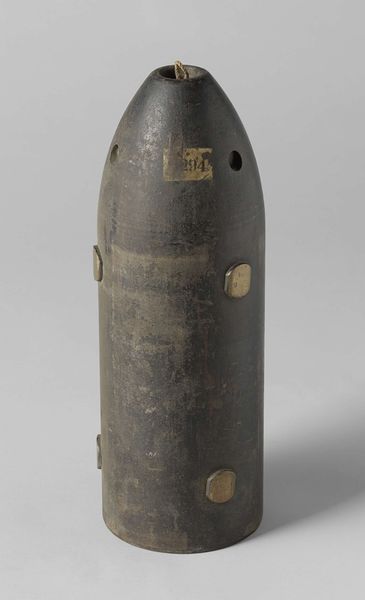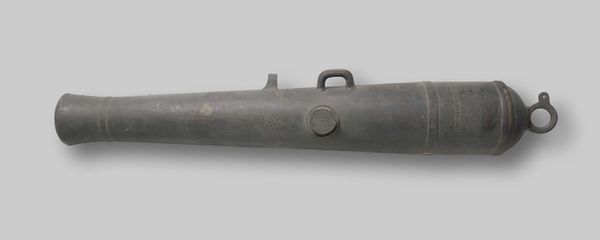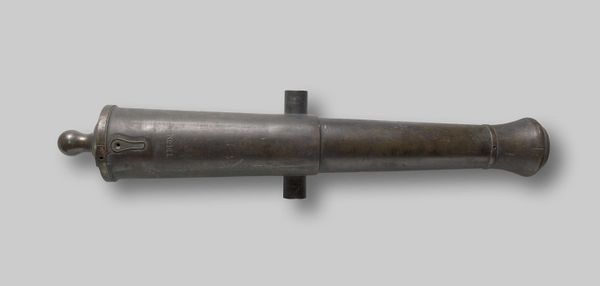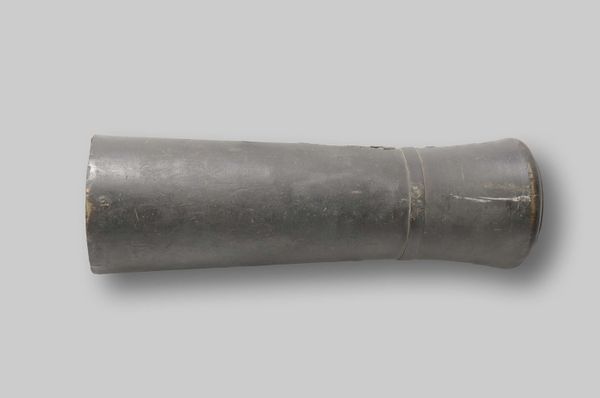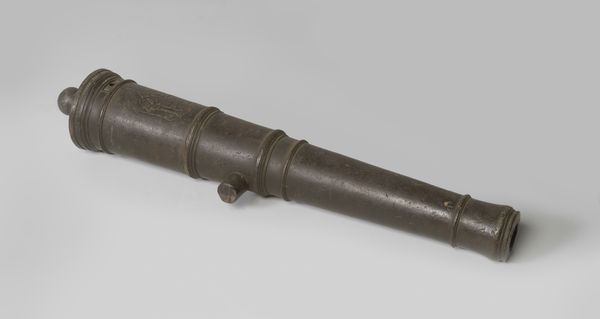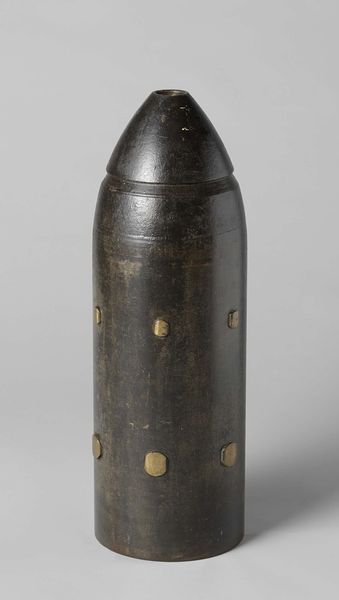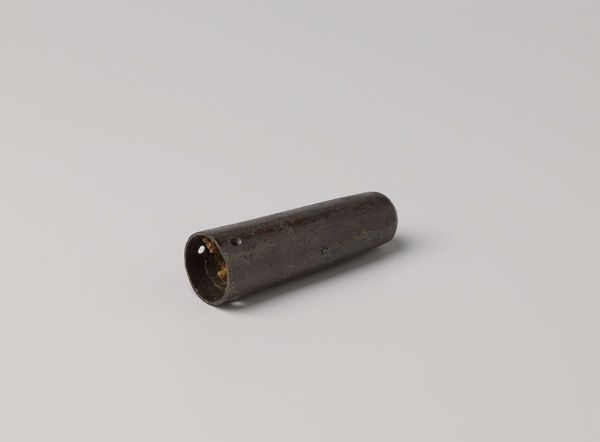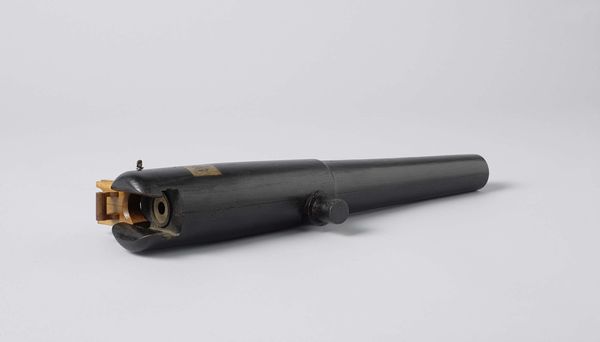
metal, bronze, sculpture
#
metal
#
bronze
#
sculpture
#
history-painting
#
academic-art
Dimensions: length 97.5 cm, length 17 cm, length 80.5 cm, diameter 190 mm, diameter 20 cm, weight 141.8 kg, diameter 4.8 cm
Copyright: Rijks Museum: Open Domain
This bronze breech-loading cannon, made by Maritz et fili, is a testament to the power of early modern artillery. Bronze was often favored for its casting properties, allowing for intricate designs and a smooth bore. Cannons like this were produced using a labor-intensive process. First a mold had to be constructed, molten bronze poured in, and the casting cooled. It then required skilled metalworkers to refine the bore and exterior. The inherent qualities of bronze—its weight, density, and ability to withstand high pressure—were critical to its function. The cannon’s form, dictated by the need to contain explosive force, speaks volumes about the technology of warfare at the time. Consider how the creation of this cannon reflects the social dynamics of its era. It's a product of specialized labor, with teams of founders, finishers, and engineers contributing to its creation, a reminder that even objects of destruction are products of great ingenuity and expertise.
Comments
No comments
Be the first to comment and join the conversation on the ultimate creative platform.
